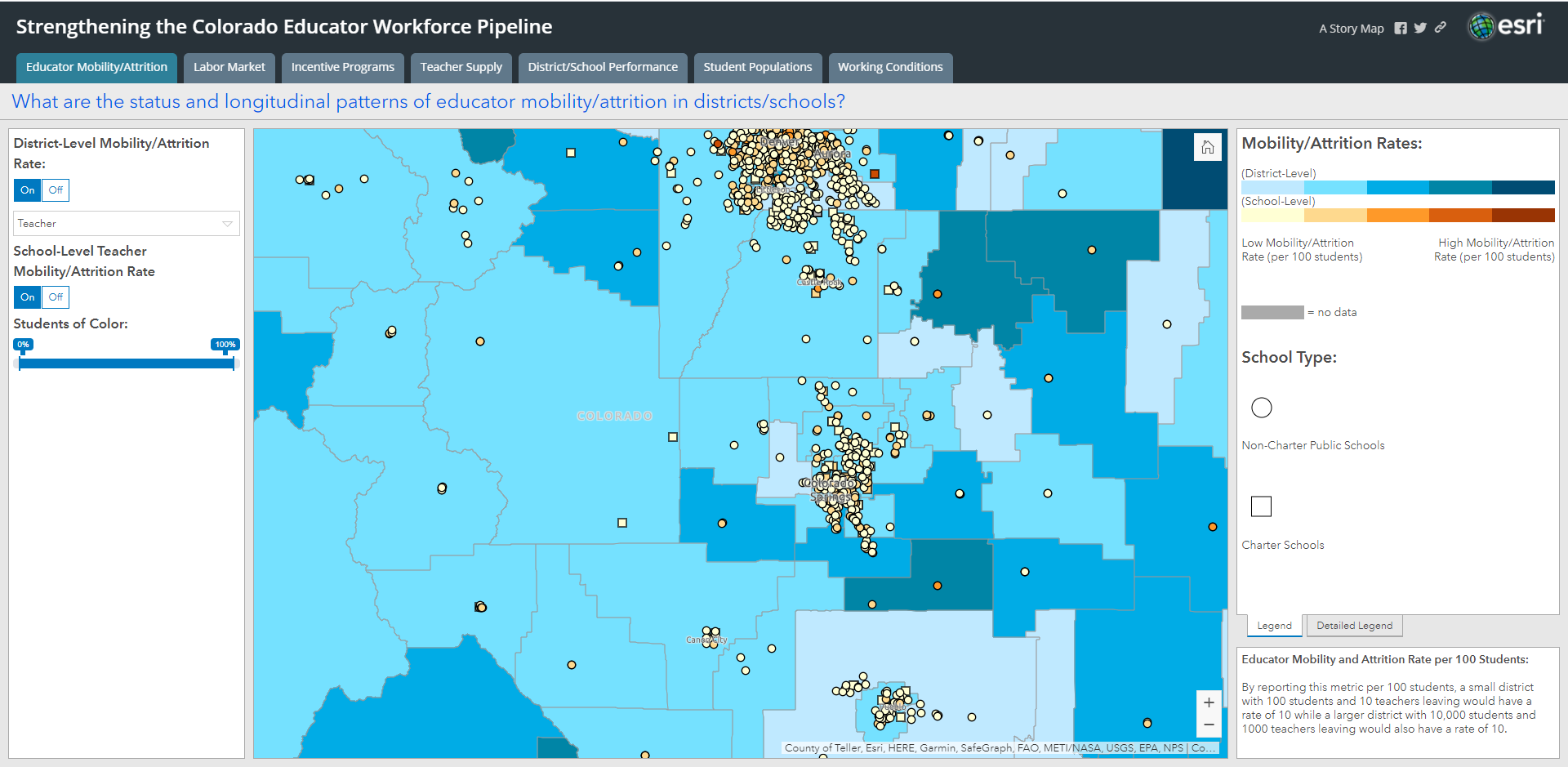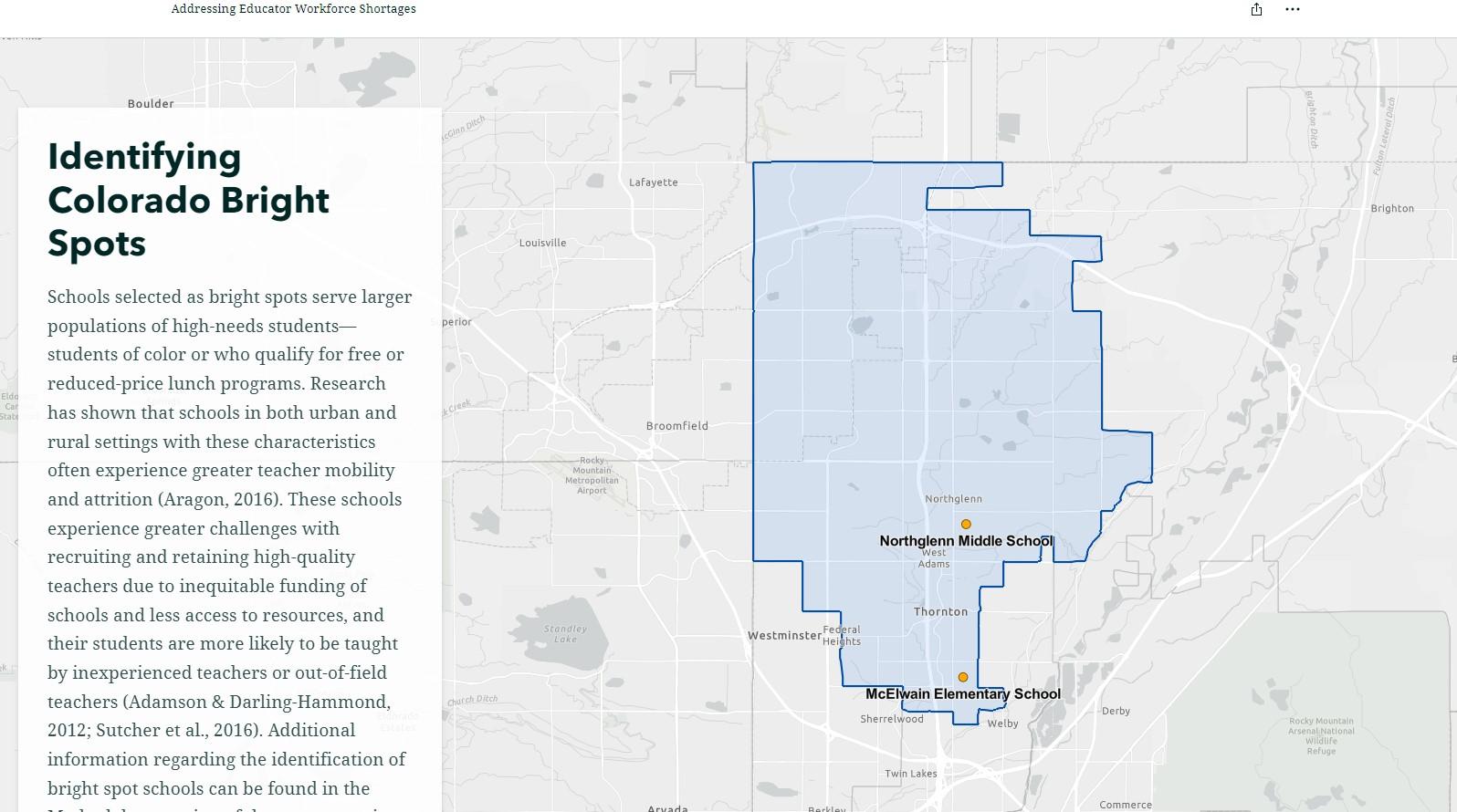GIS Mapping to Strengthen the Educator Workforce in Colorado

Leading up to the 2019–20 school year, Colorado schools needed to fill 7,242 teaching positions representing 13.25% of all teaching positions in the state. Of those positions, 1,132 remained unfilled or were filled through a shortage mechanism (e.g., long-term substitutes, retired educators, alternative/emergency authorizations).
To address these gaps, Colorado partnered with the Region 12 Comprehensive Center to engage stakeholders and identify data-base strategies and opportunities to strengthen the educator workforce pipeline utilizing the GTL Center's resources and expertise.
To help state education agencies (SEAs) consider strategies that will not further exacerbate systemic teacher shortages, the GTL Center and Region 1 and 9 Comprehensive Centers established a Community of Practice of SEAs, districts, and other stakeholders to collaboratively develop COVID-specific educator shortage solutions alongside experts and peers.
AIR's Approach
Where a person lives, learns, and works can have dramatic impact on their life outcomes. These “place- effects” are the result of unequal access to resources and opportunities.
To better understand these inequities, the Region 12 Comprehensive Center (R12CC) built a Geographic Information System (GIS) application to produce customized interactive maps designed to highlight factors that may be affecting educator shortage challenges across the state.

To support R12CC and the Colorado Department of Education (CDE), the GTL Center employed a three-step process to create a locally driven, evidence-based plan for strengthening Colorado’s educator workforce.
- Step 1. Data Analysis Using GIS. Visualize and analyze existing educator workforce gaps and opportunities across the educator career continuum at the state, district, school, and educator preparation program levels using a customized GIS map.
- Step 2. Stakeholder Engagement and Root Cause Analysis. Engage diverse stakeholders to identify the underlying root causes for identified gaps using a modified version of the GTL Center’s Root Cause Analysis Workbook.
- Step 3. Evidence-based Strategy Selection. Select and connect evidence-based strategies that strengthen the educator workforce specific to each community at the school, district, and educator preparation program level.
Project Outcomes

Addressing Educator Workforce Shortages: Colorado Bright Spots Story Map
This interactive story map and accompanying report highlight Colorado districts and schools that are experience success with retaining teachers through effective strategies in schools with high-need populations and geographic factors associated with lower retention rates.
The resources provide a profile of each district and school and offers specific strategies for recruiting, onboarding, retaining, and advancing teachers. The report also highlights how these schools addressed staffing challenges during the COVID-19 pandemic.
